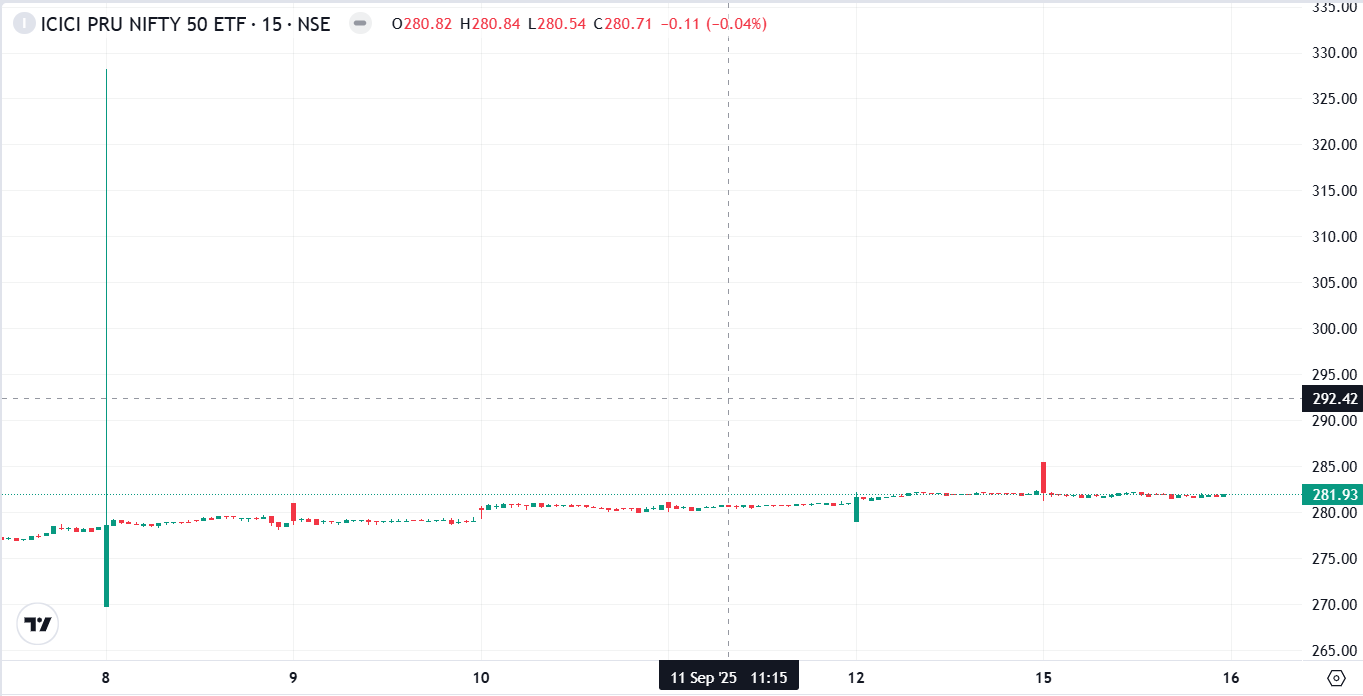Margin Trading Facility (MTF) in share market explained simply
Margin Trading Facility lets investors buy more shares with limited capital. Learn how it works, its benefits, risks, and smart practices for trading.

In India, interest in Margin Trading Facility (MTF) has surged with traders borrowing at record levels. As of August 2025, the MTF book crossed ₹96,000 crore, highlighting both growing confidence and rising risk exposure.
Margin trading allows you to take larger positions than your available capital, offering a chance to amplify returns. But the same leverage can magnify losses if not handled carefully.
This shift is not just a trend; it reflects a deeper change in how Indian traders approach equity markets.
In this article, we will explain what margin trading is, how it works, what benefits and risks it carries, and how to use it responsibly.
How does the Margin Trading Facility work?
Margin Trading Facility allows a trader to purchase securities by contributing a portion of the total transaction value, while the remaining amount is financed by the broker.
The broker charges interest on the amount borrowed by the trader to fund the remaining portion of the transaction. When you place an order under MTF, you pay the required initial margin (say 25-50%) of its cost, and the broker funds the remaining part. The shares you purchase typically serve as collateral to the broker.

Example scenario:
Now, using this chart as a basis, imagine you expect NIFTYIETF to rise. Its current price is ₹281.79. Suppose your broker offers 4× leverage via margin. To buy 100 units, you need only pay ₹7,044.75 (which is 25% of ₹28,179), while the broker lends you the rest, ₹21,134.25.
- If price moves up to the 52-week high area, say ₹320, your 100 units become worth ₹32,000, giving you a profit of roughly ₹3,820 (minus interest and fees) on your initial ₹7,044.75 investment (roughly 54% return) rather than a 14% return if you had bought with cash.
- If instead the price falls to, say, ₹250, your value drops to ₹25,000, loss becomes approximately ₹3,179 (about 45% loss) plus interest, showing how leverage amplifies both gains and losses.
Interest calculation:Considering you hold the NIFTYETF for 10 days.
- Daily Interest: ₹21,134.25 X 0.0342% = ₹7.23 per day
- Total Interest: ₹7.23 x 10 = ₹72.32
After 10 days, you would pay ₹72.28 in interest for holding NIFTYETF using MTF. Use our MTF Calculator to calculate the interest, other charges and required margins based on the holdings period.
This example highlights how MTF in the share market can magnify returns, while also showing the importance of managing risks when prices move unfavorably.
What are the benefits of MTF?
Margin trading, when applied with caution, can act as a strategic tool that expands a trader's flexibility and potential returns. Below are some key advantages:
Enhanced buying power
Using margin boosts your capital, allowing you to buy more than your capital alone permits.
For instance, suppose you have ₹10,000 and your broker allows a 50% margin. You deposit your ₹10,000 and borrow another ₹10,000.
Now you can purchase ₹20,000 worth of shares, doubling your exposure while only using half your own capital.
Ability to act on time-sensitive opportunities
Markets often reward speed. A major corporate announcement, policy shift, or earnings release can create a narrow window to benefit.
Suppose you have ₹20,000 available and your broker extends 4× leverage through Margin Trading Facility. This allows you to take a position worth ₹80,000 immediately instead of waiting to accumulate more funds.
If the stock rises 15% after strong results, your return on the initial capital grows significantly. Margin trading, when used wisely, lets traders capitalize on such timely opportunities.
Potential for higher returns
Margin trading allows you to benefit from the full value of a larger position even though you add only part of the capital yourself.
If a trader uses ₹30,000 as margin to hold a position worth ₹80,000, the returns are calculated on the entire ₹80,000. A modest price increase can therefore generate profits far greater than what would have been earned using only personal funds.
This multiplier effect is what attracts many traders to margin trading, as it amplifies the upside of winning trades.
Greater flexibility and liquidity
Margin trading lets you place a larger trade with leverage without having to wait until you accumulate capital.
By pledging securities you already own as collateral, you can unlock capital immediately, handle urgent expenses, or act on trading ideas without selling your holdings.
This liquidity means you can move quickly to seize market opportunities, borrow only what you need, and decide when to close or repay positions on your own schedule.
Downside of MTF
Because leverage magnifies outcomes both good and bad, margin trading exposes traders to several serious risks:
Loss exceeding original capital
When you use borrowed money to invest, the losses can exceed your initial capital. For instance, if you buy shares worth ₹2,00,000 using ₹1,00,000 of borrowed funds and ₹1,00,000 of your own money, and the shares fall by 50%, your holdings shrink to ₹1,00,000. However, the loan plus interest still remains, wiping out your full capital and possibly leaving you with debt. This is risky because leverage multiplies the downside, leaving no cap on losses.
Forced liquidation & margin calls
If pledged shares fall below the maintenance margin, your broker can demand more funds immediately or sell your securities at unfavorable prices without delay. In this case, you lose control over the timing of sales and may be forced to take losses at the worst possible moment.
Accumulating interest cost
Borrowed money accrues interest regardless of whether your investment results in a profit or loss. If positions are held longer, this interest compounds and eats directly into returns. Even a small negative move in the market, when combined with interest charges, can quickly turn a potential profit into a net loss.
Liquidation without warning
Brokers are allowed to sell securities to cover margin shortfalls without prior notice. This can lead to losing assets you preferred to hold. Because you cannot choose what gets sold, sudden forced exits can cause both financial and emotional stress.
Volatility & market gap risk
Markets can react sharply to news, regulations, or sudden shifts in sentiment. Prices may drop quickly, triggering margin calls instantly, often leaving you with no time to respond. Such sudden market moves cause amplified losses on margin, sometimes far beyond what you expected or can afford.
Best practices for trading with MTF
To trade on margin responsibly, you need solid discipline every time you open a leveraged position.
Define maximum drawdown and risk per trade
Before entering a margin trade, decide in advance how much loss (in percentage or absolute rupee amount) you are willing to bear in that trade. That way, the decision to exit is not emotional but based on your own limit. Using stop loss orders aligned with that loss threshold ensures losses stay contained.
Never use full permitted leverage
Even if your broker allows 2x or more leverage, leave a safety margin. Using only part of the available margin helps absorb volatility or price swings without triggering margin calls immediately. It gives you breathing room to react rather than being forced into unfavorable liquidation.
Monitor interest and all associated costs carefully
The cost of borrowing on margin is not just interest on the loan but also charges like brokerage, pledge fees, and borrowing spreads. Over time, these reduce net profits or amplify losses. Always compute the break-even price, considering all those costs before committing capital to a margin trade.
Have exit strategies and contingency plans
Decide in advance the levels at which you will exit for profit and the levels at which you will exit to limit losses. Prepare for unexpected events such as a sudden market drop or adverse news flow. Always keep liquidity ready, either in cash or marginable securities, so you can add funds promptly or close positions without delay.
This discipline not only prevents compounding losses but also helps you avoid the risk of a margin call, which can force liquidation at unfavorable prices.
To conclude
Margin Trading Facility offers traders a chance to enhance returns if handled with care. Success depends on weighing benefits against risks and applying leverage wisely. Careful planning, consistent monitoring, and disciplined execution allow traders to protect capital while still using margin as a responsible tool in financial markets.




